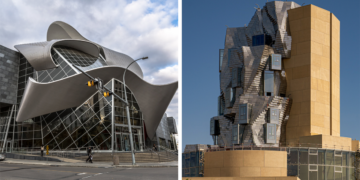Even in constant change, some things have a firm foundation. We’re talking about interesting historical places and stunning castles, monasteries, abandoned houses, and many more buildings that withstood the test of time and are in view to anyone willing to look.
You don’t have to be Indiana Jones to track down these beautiful pieces of history. Before you even begin to study the dusty maps and pack your adventurer’s backpack, you can look at the most astonishing architectural monuments from the comfort of your home. So let us present to you the Interesting Old Places Twitter account. This page is the perfect place to show some love to the hundreds of centuries of human history that have produced rather spectacular treasures that fascinate travelers today.
Get ready to dive deeply into the past because we have handpicked some of the most incredible pictures of old places and interesting historical places this account has to offer. Upvote your favorite ones, let us know what you think, and share the architecture gems and any interesting historical places you know of right below in the comments! (H/T)
01.
02.
03.
Since Interesting Old Places joined the Twittersphere in October 2021, the project has amassed quite a follower count. More than 71K devoted fans observe the page and get invited to “enjoy the account and pictures of some amazing old places.” Once you look at these stunning photos, it’s no wonder why the account keeps on growing.
The creator shares captivating images that call forth a feeling of adventure and discovery of lost treasures and mysteries hiding behind the centuries-old walls. The founder also states they do not own any content posted on the account, and they welcome anyone who wants to share information about the photographers and give credit where credit is due. Plus, if you have any questions about the history of the building featured on the page, they leave all the necessary information in the captions, so it’s easy to look it up.
04.
05.
06.
Standing in front of historic buildings can provide a tangible link with the past. As you scroll down and turn back the pages of time, you’ll notice how mesmerizing these historical architecture gems are. You’ll probably also realize how important it is to protect them so that future generations can show the same appreciation as you do now.
Think about any ancient structure you enjoyed visiting — there are likely few surviving examples. And while they can make anyone awe-struck by having centuries of history reflected on their facades, they may begin to look very unappealing over time. That’s why preserving historic buildings is vital to keeping communities connected with their past. Heritage planning and policy advisor Marvin Thomas explained to Toronto Star that the best method to ensure the longevity of a historic structure would be to utilize it by finding a purpose for it.
“The best way to preserve a historic building is to ensure it can continue to be used in some fashion. There are some excellent museums and interpretive centers for which historic buildings are being used, but not every historic building can be a museum. It’s important to find other uses for them,” he explained.
07.
08.
09.
While sometimes it might be used for the intent for which it was initially built, that is rarely the case. “Many examples of historic buildings are used for new things, like condos or other housing types. The architectural character of these buildings often makes them popular for things like restaurants or retail shops or professional services,” he added that the process of making a building functional for contemporary use and preserving its heritage features at the same time is called adaptive reuse.
10.
11.
12.
13.
One of the main motivations behind finding a use for a historic building is to generate income for it. “Without generating any revenue or income, it can be costly to freeze a building in time and keep it as a museum piece instead of a viable functioning building in a community.”
He continued: “It’s not like building a new building [or] doing a straight-on renovation of a non-historic building. The biggest thing is that certain architectural pieces of the building express and embody and create the character of that building. So when doing that renovation, you’ll have to preserve those. So balancing the functional needs of a contemporary building with the building’s heritage and character is the biggest challenge. That and building code requirements.”
14.
15.
16.
17.
Moreover, there are plenty of benefits for the communities as well. Thomas explained that besides the obvious economic advantages, “they also have strong cultural and social values; they help connect us to the past and help tell a story of how our communities change and developed over the years.”
“We also shouldn’t forget the environmental benefits of repurposing buildings. A lot of energy and materials went into their construction, so as long as they can be used, it’s better than sending them to the landfill,” he added.
18.
19.
20.
21.
After all, it’s essential to preserve and save these old places full of culture and heritage and carry them with us into the future. Swiss architect Mario Botta once said, “Memory and history should be the absolute priorities for architects as the source of inspiration for new architecture. But today, so many people forget the past. It is unfortunate.”
22.
23.
24.
25.
26.
27.
28.
29.
30.
Like what you’re reading? Subscribe to our top stories.










































































Discussion about this post